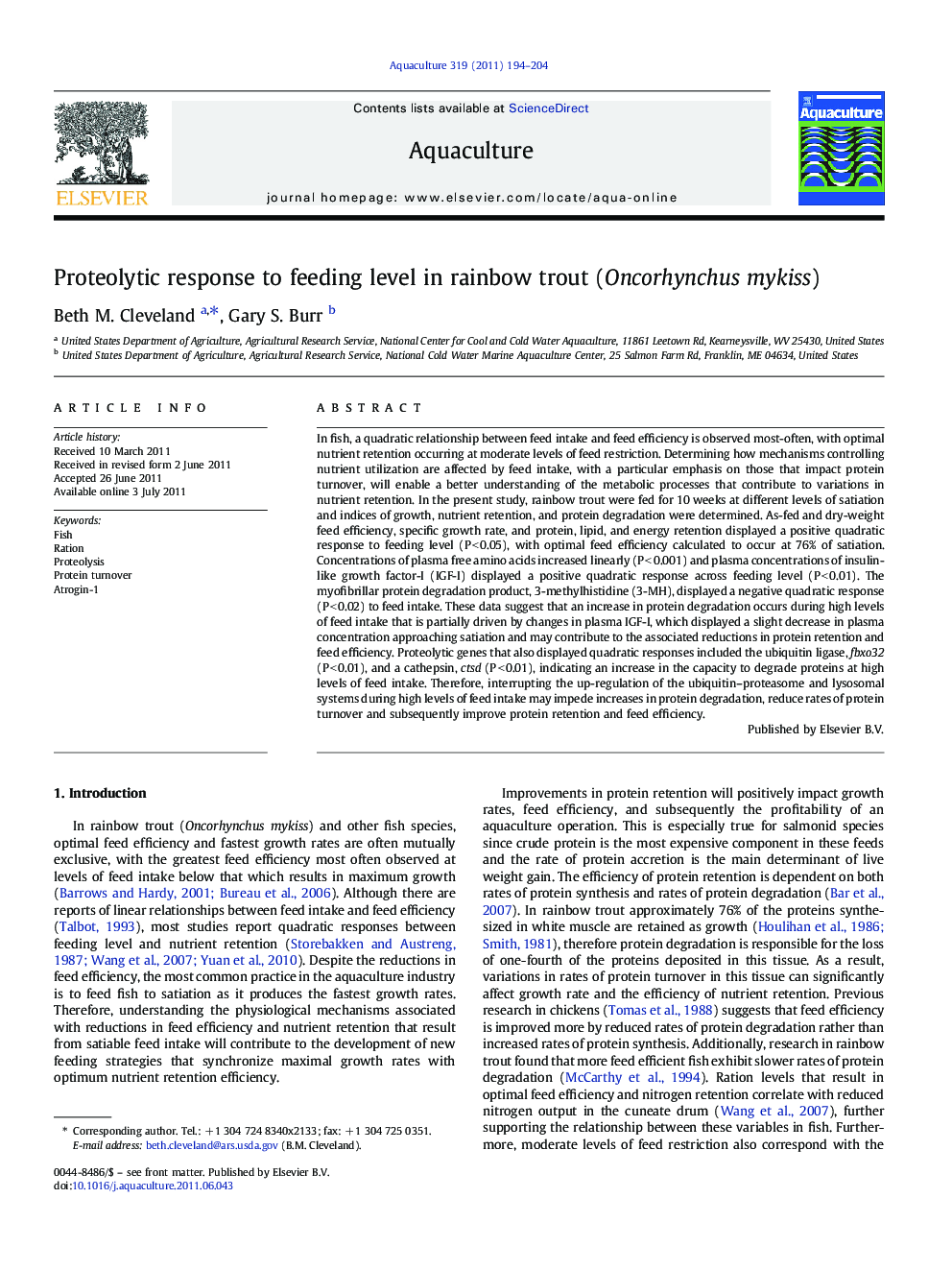| Article ID | Journal | Published Year | Pages | File Type |
|---|---|---|---|---|
| 2423045 | Aquaculture | 2011 | 11 Pages |
In fish, a quadratic relationship between feed intake and feed efficiency is observed most-often, with optimal nutrient retention occurring at moderate levels of feed restriction. Determining how mechanisms controlling nutrient utilization are affected by feed intake, with a particular emphasis on those that impact protein turnover, will enable a better understanding of the metabolic processes that contribute to variations in nutrient retention. In the present study, rainbow trout were fed for 10 weeks at different levels of satiation and indices of growth, nutrient retention, and protein degradation were determined. As-fed and dry-weight feed efficiency, specific growth rate, and protein, lipid, and energy retention displayed a positive quadratic response to feeding level (P < 0.05), with optimal feed efficiency calculated to occur at 76% of satiation. Concentrations of plasma free amino acids increased linearly (P < 0.001) and plasma concentrations of insulin-like growth factor-I (IGF-I) displayed a positive quadratic response across feeding level (P < 0.01). The myofibrillar protein degradation product, 3-methylhistidine (3-MH), displayed a negative quadratic response (P < 0.02) to feed intake. These data suggest that an increase in protein degradation occurs during high levels of feed intake that is partially driven by changes in plasma IGF-I, which displayed a slight decrease in plasma concentration approaching satiation and may contribute to the associated reductions in protein retention and feed efficiency. Proteolytic genes that also displayed quadratic responses included the ubiquitin ligase, fbxo32 (P < 0.01), and a cathepsin, ctsd (P < 0.01), indicating an increase in the capacity to degrade proteins at high levels of feed intake. Therefore, interrupting the up-regulation of the ubiquitin–proteasome and lysosomal systems during high levels of feed intake may impede increases in protein degradation, reduce rates of protein turnover and subsequently improve protein retention and feed efficiency.
